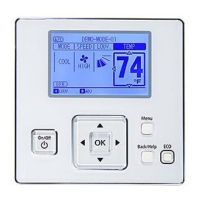Installation—Installing the FC-2000 81
Note: It may be necessary to calculate the exact requirements of the
secondary supply. In that case, add the Secondary Standby Load
obtained in Table 4 to the total current draw of all indicating
appliances in the system and substitute that figure in Table 5 for
the Main Power Supply and any additional supplies.
Table 5: Secondary Power Alarm Requirements
Device Type Number of
Devices in Alarm
Simultaneously
Multiply
By
Current
in Amps
Total
Current/Device
MPS-24A
1X6.06.0
MPS-24B
1 X 2.93 2.93
AVPS-24
[] X 3.0
AA-30
[] X 3.0
AA-120
[] X 7.3
Sum Column for Secondary Alarm Load = amps
Table 6: Total Secondary Power Requirements
Secondary
Standby Load
(from Table 4)
Required Standby
Time
(24 or 60 hours)
[]X []=
Secondary Alarm
Load
(from Table 5)
Required Alarm
Time (for 5 minutes,
enter 0.084)
[]X []=
Sum Column for Amp Hours =
Multiply by the Derating Factor x 1.2 =
Total Amp Hours Required = AH
Notes:
1. NFPA 72 Local and Proprietary systems require 24 hours of standby
power followed by five minutes in alarm. NFPA 71 Central Station,
and NFPA 72 Auxiliary and Remote Station Systems require 60 hours
of standby power followed by five minutes in alarm. Batteries
installed in a system powered by a generator need to provide at least
four hours of standby power.
2. If the total exceeds 25 AH (17 AH on the MPS-24B), an NR45-24
Remote Battery Charger is needed. If the total exceeds 55 AH, a
UL Listed Uninterruptable Power Supply with sufficient amp hour
capacity is needed.

